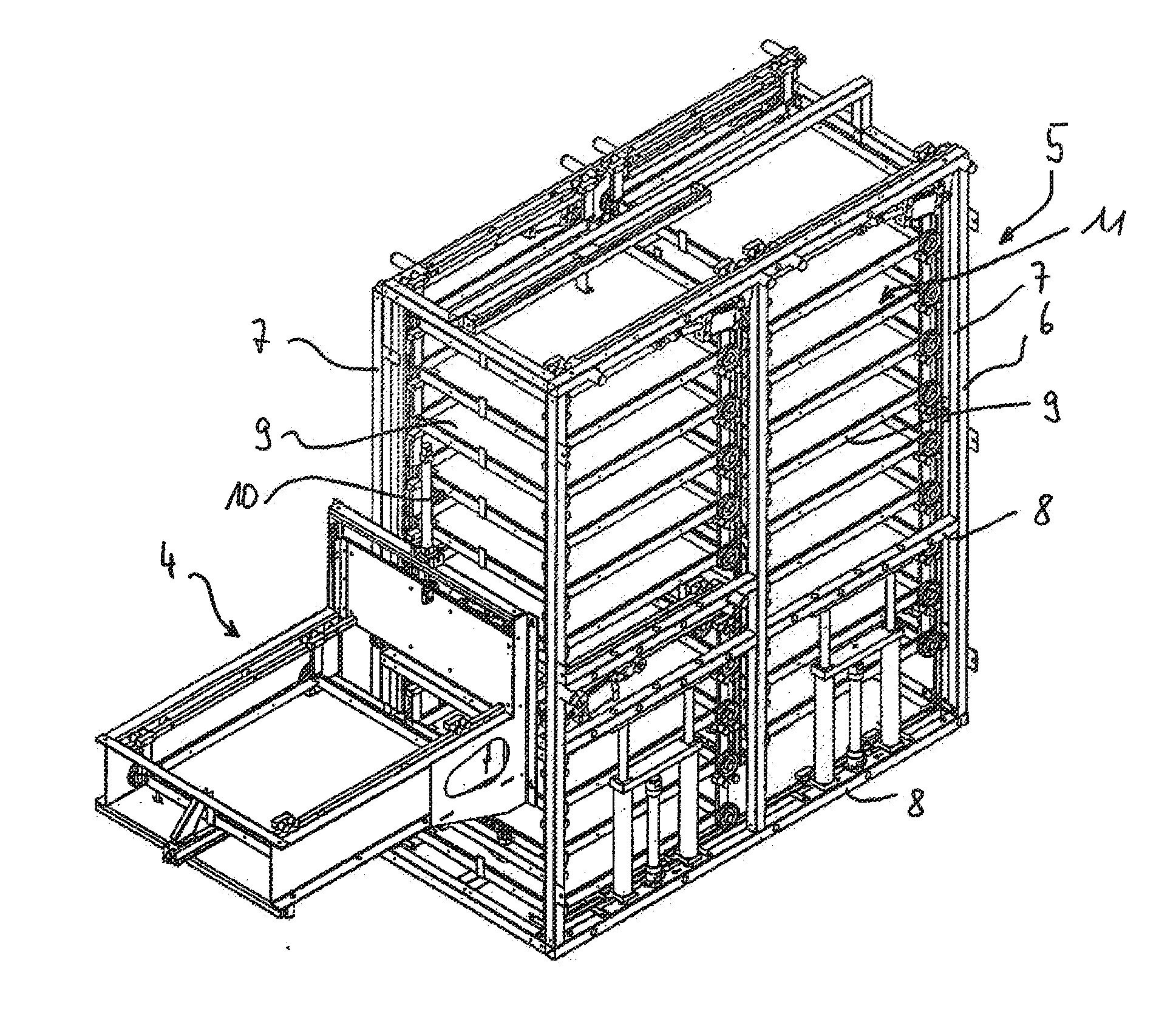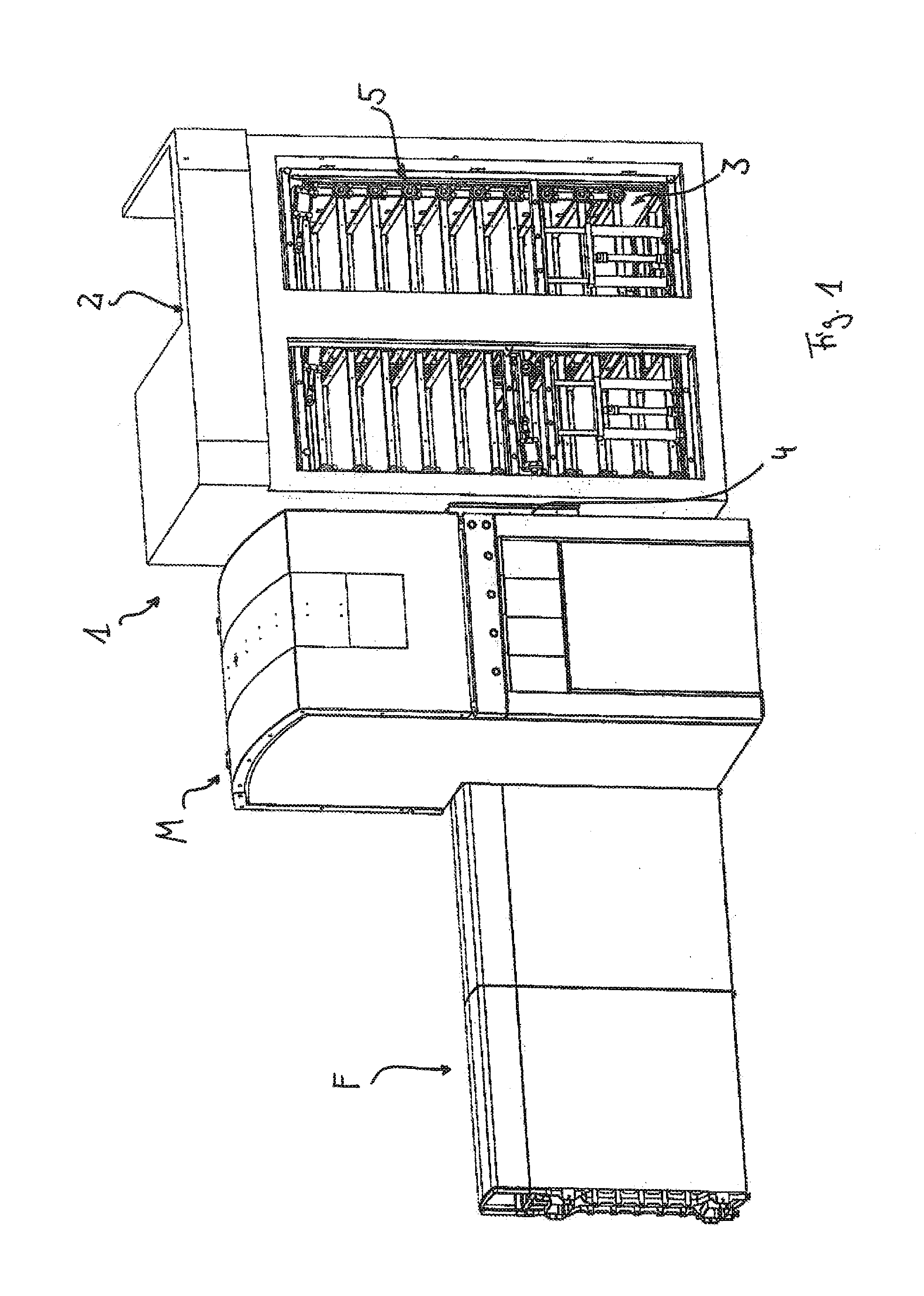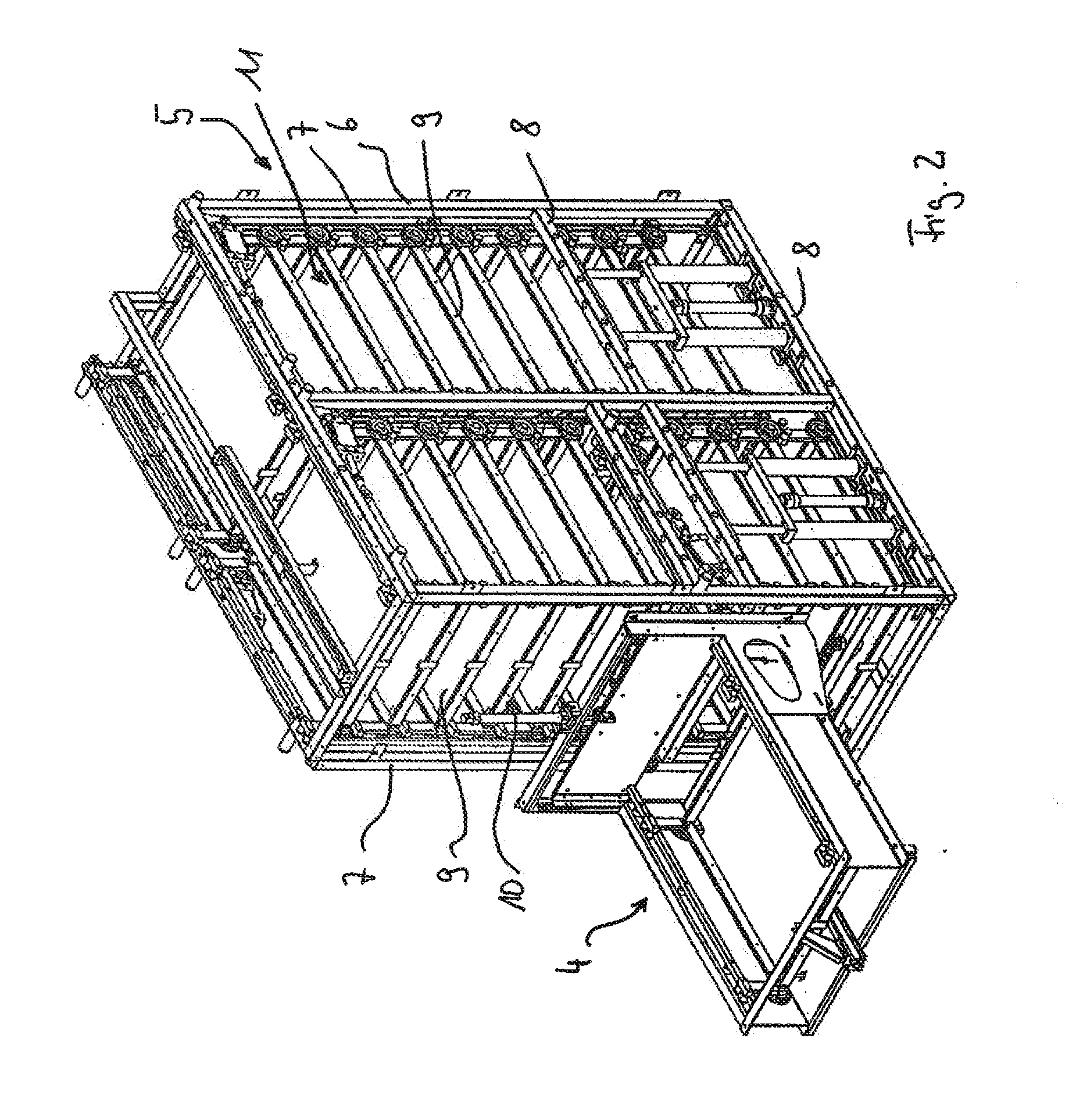Specimen archive
a technology of specimens and archives, applied in the field of specimen archives, can solve the problems of large three-dimensional space, unfavorable ratio of the number of possible specimens that can be stored, and the necessary volume of the receptacle space, so as to achieve convenient and reliable storage of specimens, simple and easy extraction, and convenient storage
- Summary
- Abstract
- Description
- Claims
- Application Information
AI Technical Summary
Benefits of technology
Problems solved by technology
Method used
Image
Examples
Embodiment Construction
[0050]FIG. 1 shows an embodiment of an archive apparatus according to the invention, referred to as 1, that is connected to a train of an automatic conveying system F, presently only depicted in sections, for conveying, in particular, individual specimen vessels. The archive apparatus 1 comprises an archive cabinet 2 containing an archive room 3 therein. The archive cabinet 2 in the present embodiment is equipped with a refrigeration unit (not shown in further detail) for cooling the inside space, meaning the archive room 3. The present archive cabinet 2 is a commonly available commercial or industrial refrigerator having a double door, as sold by the company Liebherr, which has integrated therein an additional opening for a lock 4. Lock 4 is laterally connected to the archive cabinet 2, which can only be seen schematically in the representation and by which the archive room 3 is accessible from the outside. A manipulator unit M is connected to lock 4; the manipulator unit is not a ...
PUM
 Login to View More
Login to View More Abstract
Description
Claims
Application Information
 Login to View More
Login to View More - R&D
- Intellectual Property
- Life Sciences
- Materials
- Tech Scout
- Unparalleled Data Quality
- Higher Quality Content
- 60% Fewer Hallucinations
Browse by: Latest US Patents, China's latest patents, Technical Efficacy Thesaurus, Application Domain, Technology Topic, Popular Technical Reports.
© 2025 PatSnap. All rights reserved.Legal|Privacy policy|Modern Slavery Act Transparency Statement|Sitemap|About US| Contact US: help@patsnap.com



